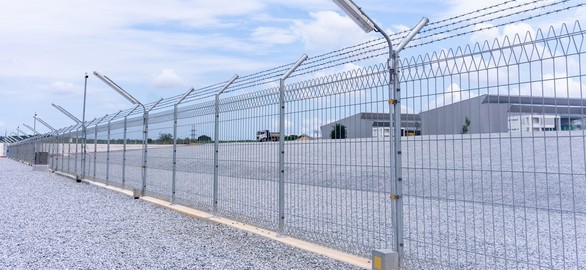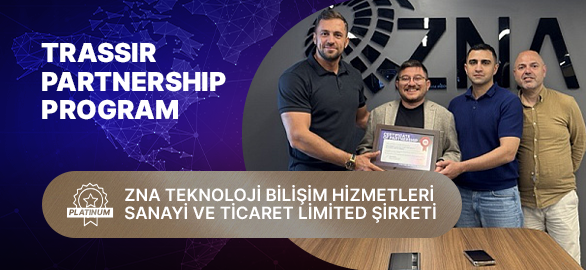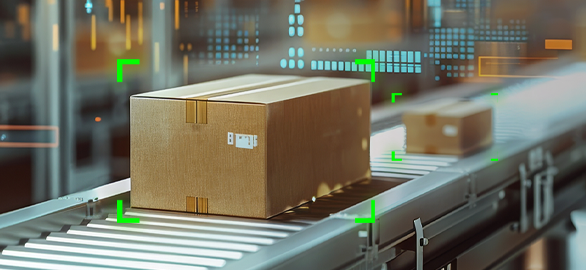

License to secure
Security capabilities
There are different versions of the vehicle recognition system available on the market, but as a rule, their hardware and software are based on Al technologies. Generally, these systems have a wide range of capabilities, such as automatically detecting and determining the vehicle type and license plate in real-time and then storing and cross referencing it to white/black lists.
Al for LPR
The degree to which Al technologies are applied plays a great role in the work of vehicle detection systems and many tasks are solved more efficiently with Al than with standard mechanisms of the past.
For example, the TRASSIR system's neural network is able to accurately determine the coordinates of a license plate's corners (even if it is located at an angle to the camera), which allows it to record the car's data as accurately as possible. Experience has proven that the system's implementation allows users to save money on the maintenance and development of facilities in the fields of construction, retail and industry. In some cases, vehicle control time at the checkpoint was reduced by half.
The latest improvements in the field of auto detection have been aimed at improving vehicle tracking: since vehicles can differ visually from one another greatly, the neural network calculates a vector of unique features of the car to improve recognition accuracy.
Market trends are such that systems are constantly being improved, as manufacturers continuously collect feedback from users. We can look at the following areas to improve the module:
The six steps of license plate recognition.
As a rule of thumb, most license plate recognition algorithms follow the steps below:
1. Firstly, the LPR engine looks to identify the license plate's positioning within the image - this helps the LPR focus only on the license plate and disregard any other data.
2. Angular corrections help the LRP decode license plates that have been captured at awkward angles - for example, on the side or from above.
3. Filters are then applied to help eliminate any shadows or shaded areas. Edge detection in particular is used when there is high contrast between the background and the text being identified.
4. Tools like whitespace delineation are used to identify the spaces between letters on the license plate. Errors are more likely to occur here if the spacing of characters on the license plate varies.
5. Optical character recognition techniques are then used to identify each character. This could include pattern matching, proportion, pixel repetition, and edge tracing.
6. In the final step the characters identified and their sequence are checked against rules specific to each region.
Follow the link below to learn more:
https://www.securitymiddleeastmag.com/magazine/
What's New?
All news
How to Choose the Right Surveillance Cameras for Retail: Zone-Based Guidance with DORI Standards in Mind
How to Choose the Right Surveillance Cameras for Retail: Zone-Based Guidance with DORI Standards in Mind

Welcoming Our New Platinum Partner: BİSAVUNMA GÜVENLİK VE RADAR SİSTEMLERİ SANAYİ TİCARET LİMİTED ŞİRKETİ
Welcoming Our New Platinum Partner: BİSAVUNMA GÜVENLİK VE RADAR SİSTEMLERİ SANAYİ TİCARET LİMİTED ŞİRKETİ

How TRASSIR’s PRO Dual Light Cameras Help You Work Faster and Smarter
How TRASSIR’s PRO Dual Light Cameras Help You Work Faster and Smarter

No More Blind Spots: How TRASSIR Reduces Losses and Investigation Time in Warehouses
No More Blind Spots: How TRASSIR Reduces Losses and Investigation Time in Warehouses

Welcoming Our New Gold Partner: DG Bilgisayar ve Yazılım Destek Hizmetleri
Welcoming Our New Gold Partner: DG Bilgisayar ve Yazılım Destek Hizmetleri

Beyond the Perimeter: How TRASSIR Protects What’s Outside Your Factory Walls
Beyond the Perimeter: How TRASSIR Protects What’s Outside Your Factory Walls

Welcoming Our New Platinum Partner: KARE BİLGİSAYAR SANAYİ VE TİCARET ANONİM ŞİRKETİ
Welcoming Our New Platinum Partner: KARE BİLGİSAYAR SANAYİ VE TİCARET ANONİM ŞİRKETİ

TRASSIR Launches New Cameras with Dual Illumination to Reduce Incident Investigation Time
TRASSIR Launches New Cameras with Dual Illumination to Reduce Incident Investigation Time

Welcoming Our New Platinum Partner: ZNA TEKNOLOJI
Welcoming Our New Platinum Partner: ZNA TEKNOLOJI

Keeping Things Moving: How TRASSIR Helps Logistics Run Smoothly
Keeping Things Moving: How TRASSIR Helps Logistics Run Smoothly

Welcoming Our New Platinum Partner: LION TECHNOLOGY
Welcoming Our New Platinum Partner: LION TECHNOLOGY

New Success Story: Industrial-Grade Security at Mirbey Plastik
New Success Story: Industrial-Grade Security at Mirbey Plastik

AI-Powered Insights for Retail Security in Türkiye: How TRASSIR’s intelligent video analytics transform retail surveillance
AI-Powered Insights for Retail Security in Türkiye: How TRASSIR’s intelligent video analytics transform retail surveillance

Our First Step into Global Retail: Highlights from Retail Days 2025
Our First Step into Global Retail: Highlights from Retail Days 2025

Transforming Campus Safety: TRASSIR’s Proactive Approach to Protection
Transforming Campus Safety: TRASSIR’s Proactive Approach to Protection

Smarter Surveillance, Smoother Manufacturing
Smarter Surveillance, Smoother Manufacturing

TRASSIR Solutions to Be Featured at Securex South Africa 2025 by neaMetrics
TRASSIR Solutions to Be Featured at Securex South Africa 2025 by neaMetrics

Success Story: Smarter Access Control at Hilton Istanbul Bomonti
Success Story: Smarter Access Control at Hilton Istanbul Bomonti

Retail Losses Start at the Checkout: Here’s How to Fight Back
Retail Losses Start at the Checkout: Here’s How to Fight Back

Zigana Energy Secures Solar Fields with TRASSIR’s AI-Powered Surveillance
Zigana Energy Secures Solar Fields with TRASSIR’s AI-Powered Surveillance
Try TRASSIR For Your Business
Learn more about how TRASSIR analytic modules work! Demo mode is an opportunity to see for yourself how the system works, and also check the interface and test all the functions.Success!
We will contact you as soon as possible